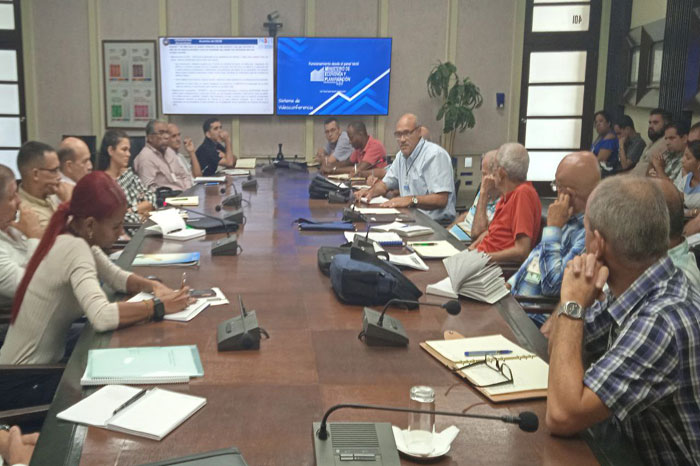
Havana, Sep 29.- Cuba is developing an ambitious airport infrastructure project aimed at strengthening operational and aviation safety, and facilitating airport services, air navigation and cargo, in which risks are minimized and Comply with national and international regulations.
The Interinstitutional Council that, under the leadership of the Ministry of Economy and Planning (MEP), periodically evaluates the progress of the National Economic and Social Development Plan until 2030, assessed what has been done as part of the Infrastructure Macroprogram in that branch and possible sources financing in order to achieve objectives and sustainability.
In the presence of Eduardo Rodriguez Dávila, head of Transportation, and Roberto Rangel Ortega, vice minister of the MEP; Armando Daniel López, president of the Institute of Civil Aeronautics of Cuba (IACC), pointed out that representatives of the International Civil Aviation Organization have praised the actions contemplated in the project.
This conceives of promoting an investment process according to strategic programs, with innovative technologies, environmental benefits, and the promotion of foreign investment; and increase the levels of export of goods and services, with high standards of quality and safety supported by innovation and information and communications technologies.
The objectives are also to recover and renew Cubana de Aviación equipment in order to guarantee the transportation of passengers and cargo with a sustainable, effective and safe air fleet; as well as completing and renewing agricultural services with a group of aircraft to satisfy customer demand.
Daniel López and Joel Beltrán Archer Santos, president of the Cuban Aviation Corporation (CACSA), mentioned among the 2023 results the expansion and modernization of the José Martí international airport, whose terminal No. 1 received multiple improvements in view of the recent Summit of the Group of 77 and China.
Work is underway on the financing, design and project of the expansion of Terminal No. 3, on increasing the operating capacity of passengers and aircraft, improving safety standards and quality of services at the facilities, and achieving technological modernization, which allows the establishment of higher and more competitive standards at an international level.
The investment process extends to the airport infrastructure of tourist centers such as Varadero, Santa Clara and Cayo Las Brujas, and to maintenance and repair workshops, among other facilities in the country, where there are 22 airports, 10 of them international.
During the meeting, compliance with the corrective action plan generated for Aviation Security was learned, and the monitoring of the airlines that request to fly to Cuba and those contracted by Cubana de Aviación to fly over the national territory is maintained.
Likewise, state inspections are carried out on maintenance organizations, foreign and national air operators and service providers at airports, and work is being done on the creation of the National Aviation Regulatory Authority.
At the meeting, the main difficulties were explained, derived mainly from the impact of the US blockade against Cuba, which have prevented rapid progress in the ambitious airport infrastructure program, which requires greater financing and supplies of material resources.
Improving training programs to improve personnel skills is another objective. (Text and photo: ACN)